-
 Bitcoin
Bitcoin $117900
0.31% -
 Ethereum
Ethereum $3766
0.28% -
 XRP
XRP $3.176
-0.31% -
 Tether USDt
Tether USDt $1.000
0.00% -
 BNB
BNB $795.6
1.51% -
 Solana
Solana $186.8
-1.09% -
 USDC
USDC $0.9999
-0.01% -
 Dogecoin
Dogecoin $0.2353
-1.33% -
 TRON
TRON $0.3226
1.49% -
 Cardano
Cardano $0.8172
-1.08% -
 Sui
Sui $4.178
3.06% -
 Hyperliquid
Hyperliquid $43.05
-3.39% -
 Stellar
Stellar $0.4367
-0.57% -
 Chainlink
Chainlink $18.62
1.47% -
 Hedera
Hedera $0.2828
6.63% -
 Bitcoin Cash
Bitcoin Cash $584.7
5.65% -
 Avalanche
Avalanche $24.81
2.53% -
 Litecoin
Litecoin $112.8
-0.88% -
 UNUS SED LEO
UNUS SED LEO $8.975
-0.08% -
 Shiba Inu
Shiba Inu $0.00001395
-1.07% -
 Toncoin
Toncoin $3.285
-1.05% -
 Ethena USDe
Ethena USDe $1.001
0.01% -
 Polkadot
Polkadot $4.123
0.76% -
 Uniswap
Uniswap $10.49
-0.18% -
 Monero
Monero $326.5
0.14% -
 Dai
Dai $0.9999
-0.02% -
 Bitget Token
Bitget Token $4.576
0.34% -
 Pepe
Pepe $0.00001247
-1.55% -
 Cronos
Cronos $0.1400
3.77% -
 Aave
Aave $295.1
-0.73%
Does USDT support cross-chain transactions?
USDT cross-chain transfers rely on bridges, not native functionality, introducing risks like exploits and delays. Careful bridge selection, considering security, fees, and speed, is crucial for safe and efficient transactions.
Mar 03, 2025 at 01:00 pm
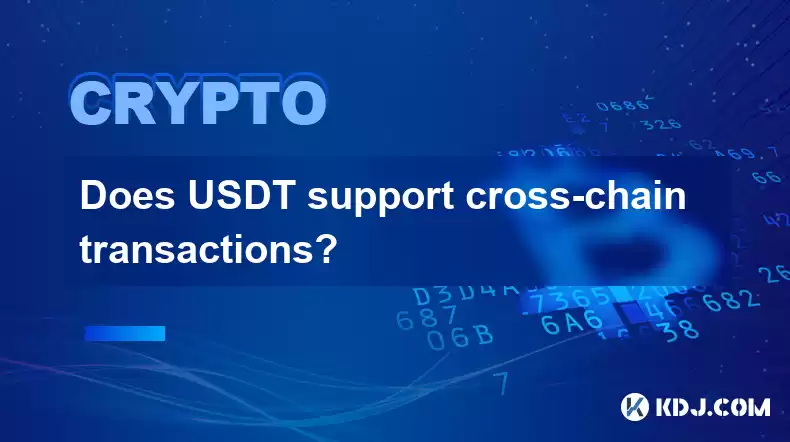
Does USDT Support Cross-Chain Transactions? A Deep Dive into USDT's Interoperability
Key Points:
- USDT, despite its dominance, doesn't natively support cross-chain transactions in the same way a truly decentralized protocol might. Its functionality relies on bridges and wrapped tokens.
- Several different bridges facilitate USDT transfers between various blockchains, each with its own security considerations and potential risks.
- Understanding the mechanics of these bridges, the risks involved, and the different types of USDT available across chains is crucial for navigating cross-chain transactions safely and efficiently.
- The choice of bridge significantly impacts transaction speed, fees, and security. Users should carefully research their options before initiating a transfer.
- While seemingly simple, cross-chain USDT transfers involve complex technical processes and introduce points of potential failure.
Understanding USDT and Cross-Chain Transactions
Tether (USDT) is a prominent stablecoin pegged to the US dollar. Its wide adoption across numerous blockchain networks makes cross-chain transfers a frequent requirement for users. However, unlike native tokens designed for cross-chain compatibility from the outset, USDT's operation across different blockchains relies on bridging technologies. This means that the USDT you hold on Ethereum is not directly transferable to, say, Solana, without going through an intermediary process. This process involves "wrapping" the USDT on one chain to create a corresponding token on another. This wrapped USDT functions identically to the original USDT in terms of its 1:1 peg to the USD, but it exists as a distinct token on a different blockchain. The security and functionality of this wrapped token are entirely dependent on the integrity and security of the bridge facilitating the transfer. Understanding this fundamental aspect is crucial for anyone attempting cross-chain USDT transfers. The implications extend beyond simple transfers; they impact the overall liquidity and usability of USDT across the decentralized finance (DeFi) ecosystem. The efficiency and security of these bridges directly influence the speed and cost of transactions, and a failure within a bridge could result in the loss of funds. Moreover, the governance and transparency of the bridge operators play a vital role in ensuring the safety and trustworthiness of the entire process. Therefore, users must always exercise due diligence when selecting a bridge for their cross-chain USDT transfers. The potential for exploits and vulnerabilities within these bridges underscores the need for a thorough understanding of the mechanisms at play before engaging in any such transactions. Furthermore, the regulatory landscape surrounding these bridges is constantly evolving, adding another layer of complexity to the process.
- Understanding Bridge Mechanisms: The core functionality of a cross-chain bridge hinges on the concept of locking USDT on one blockchain and minting an equivalent amount of wrapped USDT on the target blockchain. This process necessitates a secure and reliable mechanism to prevent double-spending and ensure the integrity of the 1:1 peg. The security of the bridge itself is paramount, relying on various techniques, including multi-signature wallets, cryptographic proofs, and consensus mechanisms. Different bridges employ different strategies, leading to variations in security, speed, and transaction costs. Some bridges rely on centralized custodians, which introduces counterparty risk, while others employ decentralized protocols, striving for increased security and transparency. The complexity of these mechanisms necessitates a deep understanding of the underlying technology to assess the risk involved in utilizing any particular bridge. It's not enough to simply choose a bridge based on its popularity; a thorough evaluation of its architecture, security measures, and track record is crucial to mitigating the inherent risks associated with cross-chain transfers. The lack of standardization across different bridges further complicates the process, making it essential for users to understand the specifics of each bridge they consider using. This involves examining the codebase, understanding the consensus mechanism, and investigating the reputation and security practices of the team behind the bridge.
- Risks Associated with Cross-Chain USDT Transfers: The inherent complexities of cross-chain bridges introduce several potential risks. The most significant risk stems from the possibility of vulnerabilities within the bridge's smart contracts or the underlying infrastructure. Exploits and hacks targeting bridges have resulted in substantial losses in the past. Additionally, the centralization of some bridges introduces counterparty risk, meaning that the trustworthiness and solvency of the bridge operator are crucial factors. A centralized bridge operator could potentially manipulate or freeze funds, leaving users vulnerable. Furthermore, the process of locking and minting tokens across different blockchains introduces latency, potentially resulting in delays in the transfer process. Transaction fees associated with cross-chain transfers can also be significantly higher than on-chain transactions. The fluctuating nature of gas fees on certain blockchains can further exacerbate this issue. Finally, the lack of standardization and interoperability between different bridges can lead to fragmentation and a lack of seamless user experience. Users often need to navigate different interfaces and understand varying processes to transfer USDT across different chains. This complexity, coupled with the security risks, makes it essential for users to proceed with caution and due diligence.
- Types of USDT and their Interoperability: The term "USDT" can refer to USDT on different blockchains. Each instance is a distinct token, even though they all represent the same underlying claim to a US dollar. For instance, USDT on Ethereum (ERC-20) is different from USDT on Tron (TRC-20) or USDT on Solana (SPL). These different versions of USDT require different bridges and processes for cross-chain transfers. The choice of bridge often depends on the origin and destination blockchains of the USDT being transferred. This means users must carefully identify the specific type of USDT they possess before initiating a transfer. Mistakes in identifying the token type can lead to irreversible loss of funds. Understanding the nuances of different USDT tokens and their compatibility with specific bridges is crucial for successful cross-chain transfers. The different token standards (ERC-20, TRC-20, SPL, etc.) each have unique characteristics and compatibility issues that can impact the transfer process. Therefore, users must always ensure they are using the correct bridge compatible with both the origin and destination USDT token types.
- Choosing the Right Bridge for Your Needs: The selection of a suitable bridge is crucial for a successful and secure cross-chain USDT transfer. Several factors should be considered, including security, transaction speed, fees, and the reputation of the bridge operator. Some bridges prioritize security through decentralized mechanisms, while others may rely on centralized custodians, introducing counterparty risk. The transaction speed varies significantly between bridges, with some offering near-instantaneous transfers, while others may take longer. Fees also differ substantially, and users should carefully compare the costs before initiating a transfer. The reputation and track record of the bridge operator are essential considerations, as a bridge with a history of security breaches or questionable practices should be avoided. Finally, the ease of use and user interface should also be considered, particularly for less technically savvy users. A user-friendly interface can significantly simplify the process and reduce the risk of errors. Therefore, thorough research and careful consideration of these factors are crucial in selecting the optimal bridge for specific cross-chain USDT transfer needs.
FAQs:
Q: Is it safe to transfer USDT across different blockchains?
A: Transferring USDT across blockchains carries inherent risks, primarily due to the reliance on bridges. These bridges, whether centralized or decentralized, can be vulnerable to exploits or hacks. Thorough research into the chosen bridge's security measures, reputation, and track record is essential to mitigate these risks. Using reputable and well-established bridges is crucial, but even then, there's always a degree of risk involved.
Q: What are the fees involved in cross-chain USDT transfers?
A: Fees vary greatly depending on the chosen bridge, the blockchains involved, and network congestion. Transaction fees on the source and destination chains, as well as fees charged by the bridge operator itself, all contribute to the overall cost. It's crucial to check the estimated fees before initiating a transfer, as they can be significantly higher than on-chain transactions.
Q: How long does a cross-chain USDT transfer take?
A: The transfer time depends on several factors, including the chosen bridge, network congestion, and the specific blockchains involved. Some bridges offer near-instantaneous transfers, while others may take several minutes or even hours. Network congestion can significantly impact transfer times, particularly during periods of high activity.
Q: What happens if the bridge I use fails?
A: The consequences of a bridge failure can vary depending on the nature of the failure and the bridge's design. In some cases, funds might be temporarily locked, while in others, they could be permanently lost. Choosing a reputable and well-established bridge minimizes this risk, but it's never entirely eliminated. Always review the bridge's security audits and disaster recovery plans.
Q: Are there any alternatives to using bridges for cross-chain USDT transfers?
A: Currently, bridges are the primary method for transferring USDT across different blockchains. There are ongoing developments in cross-chain technology, but widely adopted alternatives haven't yet emerged to completely replace bridges for USDT transfers. The limitations of current cross-chain protocols often restrict the direct transfer of stablecoins like USDT.
Disclaimer:info@kdj.com
The information provided is not trading advice. kdj.com does not assume any responsibility for any investments made based on the information provided in this article. Cryptocurrencies are highly volatile and it is highly recommended that you invest with caution after thorough research!
If you believe that the content used on this website infringes your copyright, please contact us immediately (info@kdj.com) and we will delete it promptly.
- Bitcoin, Ruvi AI, and CoinMarketCap: Navigating the Future of Crypto
- 2025-07-28 02:30:12
- Dogwifhat (WIF) Eyes Bullish Breakout: Can It Breach $1.20?
- 2025-07-28 02:50:12
- Bitcoin Bounces: How the US-China Tariff Truce Impacts Crypto
- 2025-07-28 02:50:12
- Bitcoin Bull Market: Price Targets and Expert Takes
- 2025-07-28 02:30:12
- Cardano Price Rockets: ADA Jumps Past Resistance, $2 Target in Sight?
- 2025-07-28 01:30:14
- Ruvi AI: The Next Solana? Riding the AI Token Wave on CoinMarketCap
- 2025-07-28 00:50:16
Related knowledge
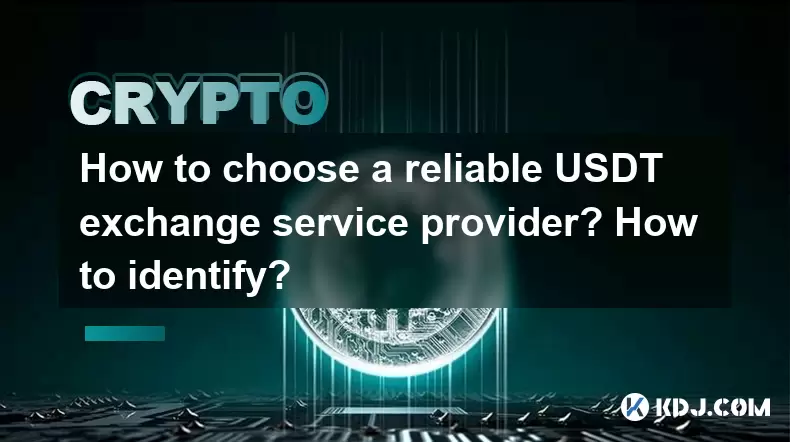
How to choose a reliable USDT exchange service provider? How to identify?
Jun 12,2025 at 03:15pm
Understanding the Role of USDT in Cryptocurrency TradingUSDT (Tether) is one of the most widely used stablecoins in the cryptocurrency market. It is d...
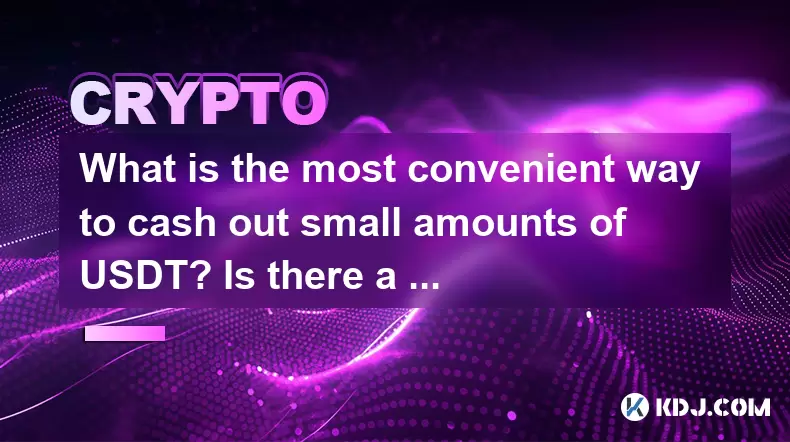
What is the most convenient way to cash out small amounts of USDT? Is there a shortcut?
Jun 11,2025 at 11:00pm
Understanding the Need to Cash Out Small USDT AmountsCashing out small amounts of USDT can be a challenge for many crypto users. Traditional methods o...
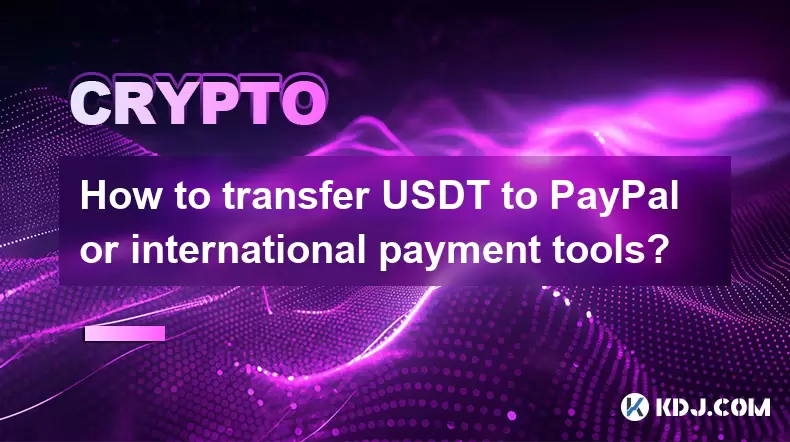
How to transfer USDT to PayPal or international payment tools?
Jun 15,2025 at 05:28am
Understanding the Basics of USDT and PayPal IntegrationUSDT (Tether) is a stablecoin pegged to the US dollar, offering blockchain-based value transfer...
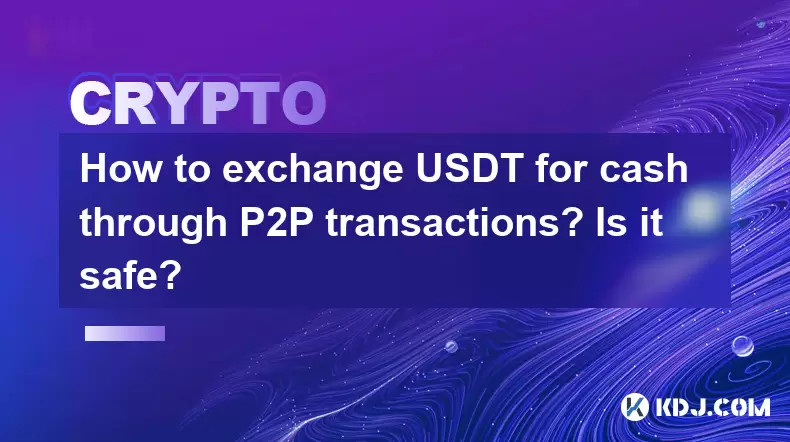
How to exchange USDT for cash through P2P transactions? Is it safe?
Jun 18,2025 at 07:56am
Understanding USDT and P2P TransactionsTether (USDT) is a stablecoin pegged to the value of the US dollar, making it a popular choice for users who wa...
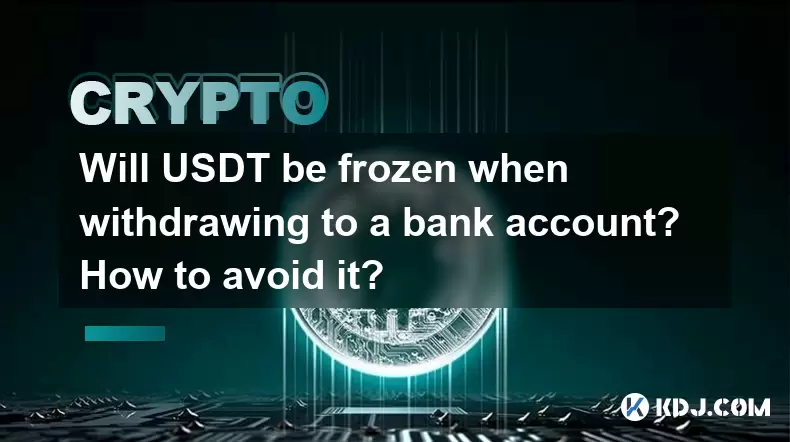
Will USDT be frozen when withdrawing to a bank account? How to avoid it?
Jun 15,2025 at 10:03am
Understanding USDT Withdrawals and Bank Account Freezing RisksWhen users decide to withdraw USDT (Tether) to a bank account, one of the most common co...

How to avoid risks when exchanging USDT for cash? What are the pitfalls?
Jun 11,2025 at 08:14pm
Understanding the Risks of Exchanging USDT for CashWhen exchanging USDT (Tether) for cash, users must be aware of the potential risks involved. As a s...

How to choose a reliable USDT exchange service provider? How to identify?
Jun 12,2025 at 03:15pm
Understanding the Role of USDT in Cryptocurrency TradingUSDT (Tether) is one of the most widely used stablecoins in the cryptocurrency market. It is d...

What is the most convenient way to cash out small amounts of USDT? Is there a shortcut?
Jun 11,2025 at 11:00pm
Understanding the Need to Cash Out Small USDT AmountsCashing out small amounts of USDT can be a challenge for many crypto users. Traditional methods o...

How to transfer USDT to PayPal or international payment tools?
Jun 15,2025 at 05:28am
Understanding the Basics of USDT and PayPal IntegrationUSDT (Tether) is a stablecoin pegged to the US dollar, offering blockchain-based value transfer...

How to exchange USDT for cash through P2P transactions? Is it safe?
Jun 18,2025 at 07:56am
Understanding USDT and P2P TransactionsTether (USDT) is a stablecoin pegged to the value of the US dollar, making it a popular choice for users who wa...

Will USDT be frozen when withdrawing to a bank account? How to avoid it?
Jun 15,2025 at 10:03am
Understanding USDT Withdrawals and Bank Account Freezing RisksWhen users decide to withdraw USDT (Tether) to a bank account, one of the most common co...

How to avoid risks when exchanging USDT for cash? What are the pitfalls?
Jun 11,2025 at 08:14pm
Understanding the Risks of Exchanging USDT for CashWhen exchanging USDT (Tether) for cash, users must be aware of the potential risks involved. As a s...
See all articles

























































































